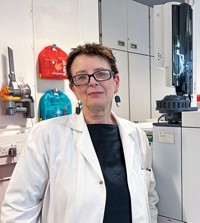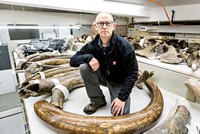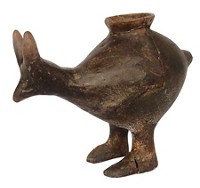Advertisement
Grab your lab coat. Let's get started
Welcome!
Welcome!
Create an account below to get 6 C&EN articles per month, receive newsletters and more - all free.
It seems this is your first time logging in online. Please enter the following information to continue.
As an ACS member you automatically get access to this site. All we need is few more details to create your reading experience.
Not you? Sign in with a different account.
Not you? Sign in with a different account.
ERROR 1
ERROR 1
ERROR 2
ERROR 2
ERROR 2
ERROR 2
ERROR 2
Password and Confirm password must match.
If you have an ACS member number, please enter it here so we can link this account to your membership. (optional)
ERROR 2
ACS values your privacy. By submitting your information, you are gaining access to C&EN and subscribing to our weekly newsletter. We use the information you provide to make your reading experience better, and we will never sell your data to third party members.
Analytical Chemistry
Newscripts
Really Hot Drink, Centenarian Canines
by Stephen K. Ritter
May 3, 2010
| A version of this story appeared in
Volume 88, Issue 18

Inventors aiming to capitalize on the discovery of radioactivity in the late 1890s came up with a plethora of medical contraptions and snake oils to pacify all manner of ailments. One of the more interesting devices was the Revigator, a crock designed to imbue ordinary water with "the lost element of original freshness—radioactivity."
Analytical chemist Michael S. Epstein of Mount St. Mary's University, in Emmitsburg, Md., in collaboration with scientists at the National Institute of Standards & Technology, decided to take a closer look at that claim (Appl. Spectrosc. 2009, 63, 1406). They uncovered that the Revigator might not have helped "create cellular energy and remove cellular poisons" as promised, but more likely provided a JOLT OF TOXIC ELEMENTS.
The Radium Ore Revigator Co. sold thousands of the ceramic vessels in the 1920s and '30s to treat or cure arthritis, flatulence, senility, and more. The inner surface was lined with clay containing carnotite, a potassium-uranium-vanadate mineral—K2(UO2)2(VO4)2∂3H2O—that released radon gas into the water as the uranium underwent radioactive decay.
Epstein's team stored water in a vintage Revigator and analyzed it via inductively coupled plasma mass spectrometry and radiation detectors. The amount of radon in the water was indeed high, but the health risk from drinking the "hot" water was relatively low, the researchers report. Instead, the greater risk associated with drinking the recommended six or more glasses of "revigated" water per day was from arsenic, lead, vanadium, and uranium dissolved in the water.
NIST scientist Lee L. Yu says he is amazed at how people would drink something they probably didn't understand and that was provided by companies that might have been unsure of the risks involved. Sounds a lot like today's cavalcade of food supplements, energy drinks, diet pills, and sex enhancers.
Most scientists studying aging take a look at worms, fruit flies, and mice. But veterinarian David J. Waters of Purdue University has decided to go a step further by also studying the life and times of man's best friend, the dog. More specifically, Waters is conducting a study of pet Rottweilers. He just spent a month crisscrossing the U.S. to visit the country's oldest Rottweilers on what he dubbed "THE OLD GRAY MUZZLE TOUR."

Waters is executive director of the Gerald P. Murphy Cancer Foundation, which is named after the developer of the test for prostate-specific antigen, an early indicator of prostate cancer. The foundation is also home to the Center for Exceptional Longevity Studies, which aims to "understand the physiology behind healthy longevity," Waters says.

Waters and his team spent the past three years creating a virtual aging laboratory by tracking down information on the bloodlines, medical history, and diet of some 150 Rottweilers who were at least 13 years old. That's the equivalent of about 100 for you and me, he says. Only 15 of the dogs now remain alive, so Waters decided to pay them a visit.
While muzzle-to-muzzle with the centenarian canines, Waters gave them a physical exam, collected DNA samples, and talked with the owners about what makes their dogs exceptional. Most Rottweilers succumb to cancer by age nine, Waters notes. But only one of the 15 dogs on the tour had developed cancer, a detail he hopes to explain with the new data. Another detail Waters wants to figure out is why women on average live longer than men. That trend is the same in Rottweilers—11 of the 15 dogs he visited are female.





Join the conversation
Contact the reporter
Submit a Letter to the Editor for publication
Engage with us on Twitter